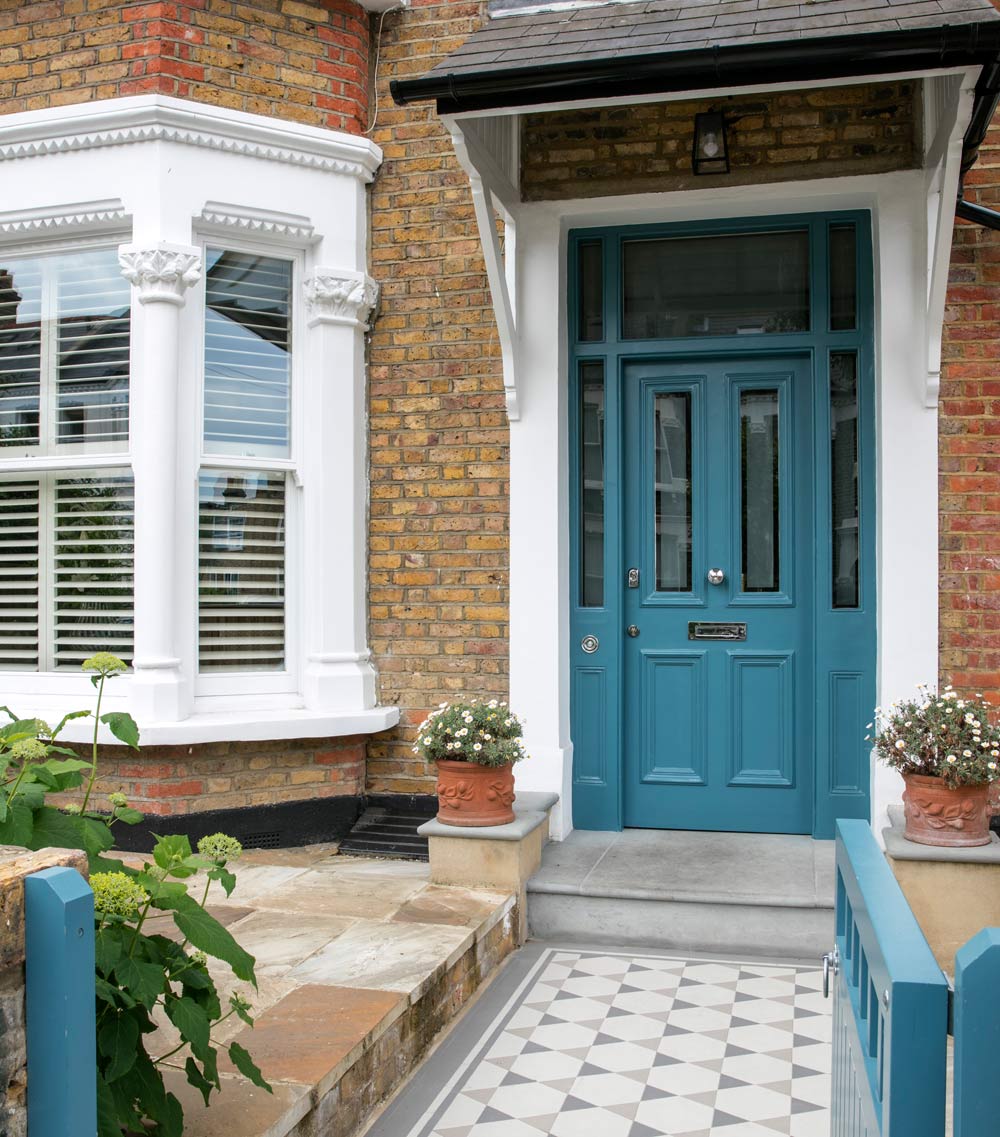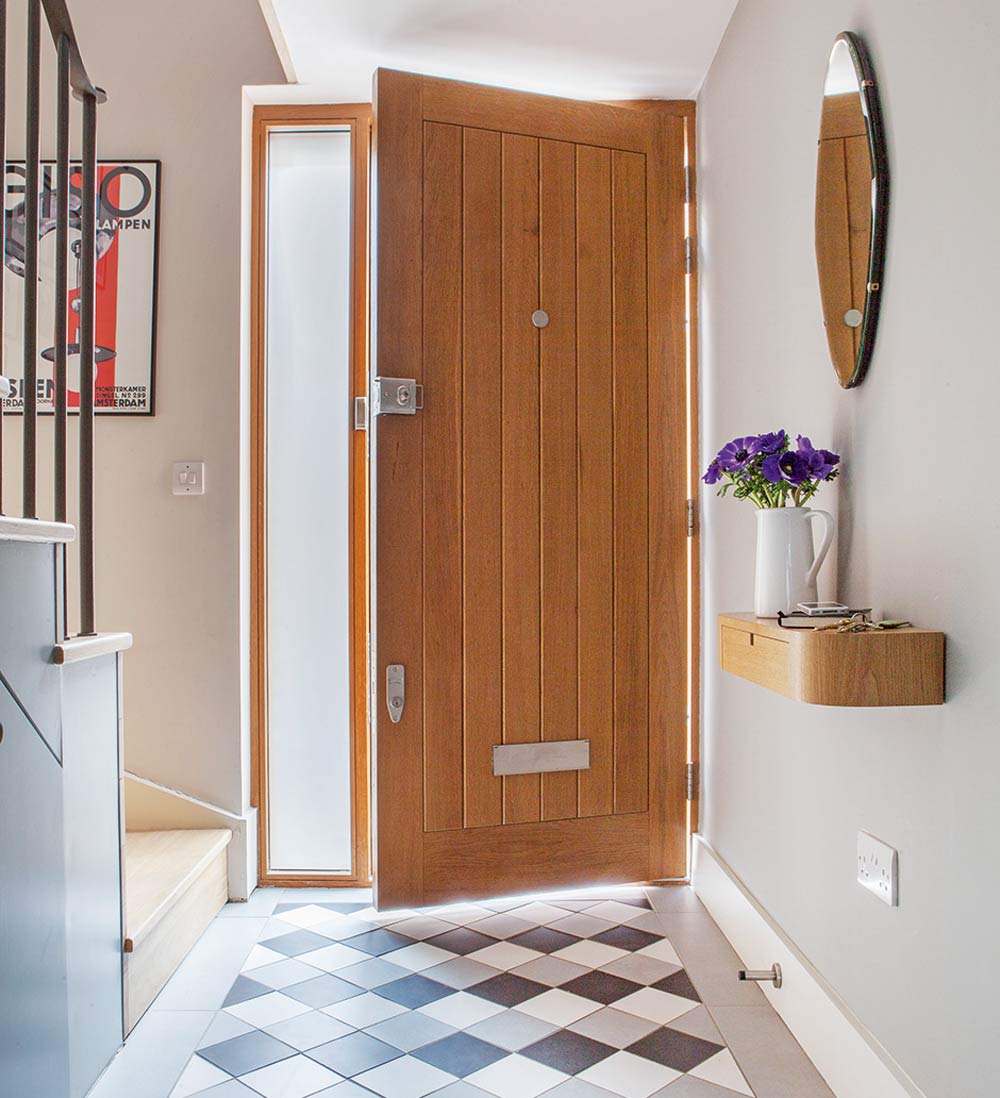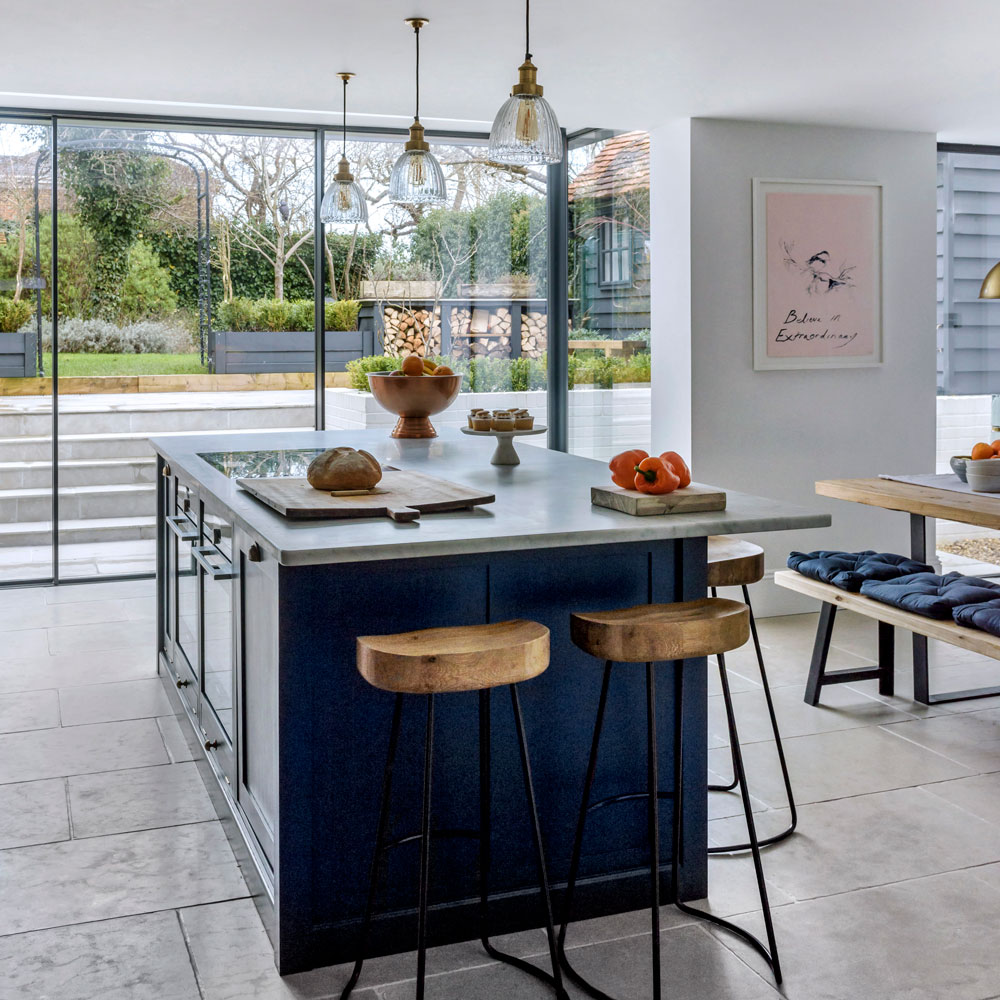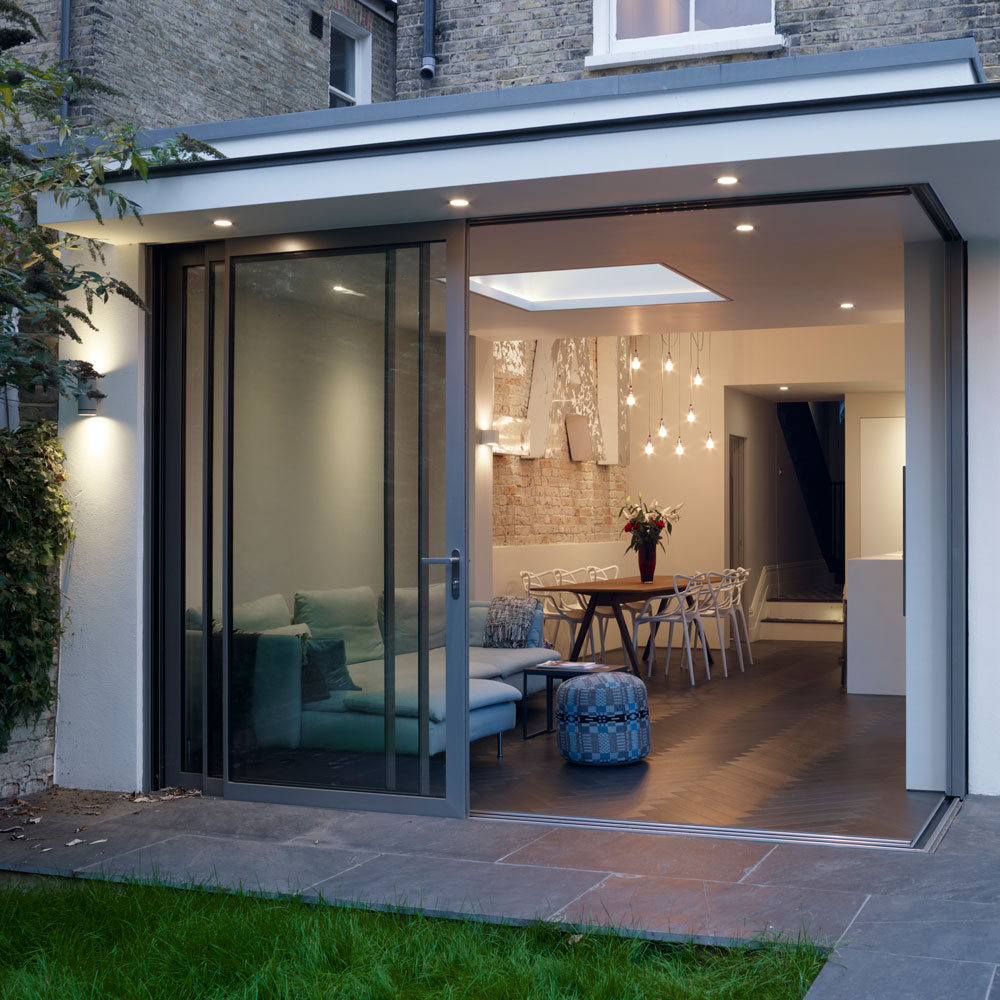Home improvement loans - a complete guide
From remortgaging to personal loans, here's how to secure a home improvement loan that suits your home renovation budget
Have you noticed parts of your home that need a refresh? Or, maybe you've imagined how life would be better with a larger kitchen or an extra bathroom. These update ideas can be hard to ‘unsee’! If you’ve decided to take the plunge with a refurb, how will you fund it? Has the subject of home improvement loans sprung to mind?
The good news is that revamping your current home is likely to be more cost-effective than moving. Still, home renovations such as loft conversions or kitchen extensions come at a price, which may require you to borrow. ‘It’s important any improvements are done properly and professionally,’ says Michael Holden, Chartered Surveyor. ‘When a property has been invested in, it shows and will pay back through added value and saleability.’
Home improvement loans explained
How much to borrow will partly depend on what you want to do and the current state of your finances. Whether you need finance for kitchens or a loan for an extension, be confident you can pay it back.
‘Affordability is the most important thing to consider,’ says Richard Jones, business development manager at price comparison site, Go Compare*. ‘There are lots of online tools and calculators that let you work out your eligibility before applying for finance.’

Once you have a sum in mind, it is time to shop around for the best deal on this borrowing. Pay too much for credit and you’re wasting money that could have been spent on the finishing touches to your home upgrade.
Home improvement loans - what are the options?
1. Personal loans - unsecured
Personal home improvement loans are not secured against your property or any assets. So, if you default on repayments, the lender can’t come after your property. However, you’ll need a good credit rating to secure the best deals. ‘A personal loan can be a good option if you’re looking to borrow between £500 and £25,000,’ says Go Compare’s Richard Jones. ‘They can be set up so you know what you’ll pay back each month too.’
Get the Ideal Home Newsletter
Sign up to our newsletter for style and decor inspiration, house makeovers, project advice and more.
The repayments are usually set over a term of one to five years. A longer term loan may seem appealing, as the monthly repayments will be lower, but you’ll end up paying more in total by the end of it than with a shorter term loan, because you’ll be paying interest for longer.
Personal loans are more suitable for smaller projects such as a new bathroom, kitchen revamp or replacement windows, rather than an extension or loft conversion (which often cost more than £25,000).
Compare interest rates
The interest rate you’ll pay will depend on your circumstances, how much you want to borrow and for how long. Costs vary hugely between lenders, with some loans priced at an interest rate more than twice as high as others according to Go Compare. The best deals go to people considered to be the best risk, so check your credit file for free at agencies such as Clearscore.com and Experian.co.uk to see where you stand.
‘It’s worth improving your credit score in advance of borrowing money,’ adds Jones. ‘Make sure you’re on the electoral roll and pay utility bills and other outgoings on time.’ Similarly, avoid too many applications for credit, which can affect your score negatively. A comparison site will let you do a soft search to see how much you can borrow and what the repayments might be before applying, which won’t affect your credit score.
It’s worth putting in this work. A cheaper interest rate could be the key to securing that roll-topped bath or statement living room flooring you’ve been dreaming of.
Personal loan Pros and Cons
Pros: Less risk than a secured loan (but not entirely risk-free if you default). If eligible, you can borrow up to £25,000, and occasionally more. You can borrow a fixed amount with fixed payments each month.
Cons: The maximum amount you can borrow is generally up to £25,000, so this option won’t be suitable for larger projects. Some finance companies may impose additional fees if you want to overpay or repay early.

2. Secured home improvement loans - against your house
Those with equity in their homes can usually borrow larger amounts for longer periods with a secured loan. The crucial point to grasp though is that this borrowing is secured against your home. Failure to make repayments on these types of home improvements will put your home at risk.
This type of borrowing is often used for large home improvements that require project planning and can usually be arranged through your current mortgage lender. This loan may be referred to a further advance.
Shop around
Don’t discount other lenders. It’s worth taking the time to see what rates others are offering on further mortgage advances or remortgages. After all, it’s better to splash cash on your extension, instead of unnecessary interest charges.
How much you can borrow depends on how you intend to spend it, how much equity is in your home and what your other outgoings amount to.
‘A further advance on your mortgage may be an option if you have enough equity in your property,’ says Paul Archer, senior mortgage manager at Nationwide Building Society. ‘Often this type of borrowing is used to fund projects that will add value to your property, such as an extension or loft conversion, as you’re able to spread the cost over the remaining term of the mortgage.’
Secured loan Pros and Cons
Pros: Homeowners with equity can borrow larger amounts than with an unsecured loan (up to 85% of the value of your home with some lenders). The sum is spread over a longer term than a personal loan - up to the remaining term of your mortgage, or even longer with a different lender.
Cons: Your home is at risk of repossession if you’re unable to meet your home improvement loan repayments. Monthly payments may appear lower than with a personal loan as they’re over a longer term, but you will end up paying more by the end of the loan.
Archer adds: ‘The repayments each month tend to be lower than on a personal loan. However, you could ultimately end up paying more by the end of the term than with a personal loan, as you’re paying for longer. Also, bear in mind that lenders will often only advance up to 85% of the value of your home, so if you’re already highly leveraged this may not be an option.’

3. Home improvement loan alternatives
Home improvement loans aren’t the only way to finance a new kitchen or bathroom. Depending on the size of your project, remortgaging, credit cards and agreed overdrafts could be other routes to finance.
- Credit cards – Deals that come with interest-free credit are worth exploring. According to Martin Lewis, from moneysavingexpert.com, if it’s done right 0% credit cards are the cheapest way to borrow money.
- Look for 0% offers – Typically you can go interest-free for a short time (usually up to 23 months) on a set amount (often under £3,000). Deals vary and assume you have a healthy credit rating already. However, it’s important to make sure you can pay off the full balance within the introductory period to avoid paying interest when the 0% interest period ends, as rates will then shoot up.
‘If you only need to borrow a small amount over a short period or you want more flexibility with repayments, then you could look to fund the works using a credit card,’ says James Broome of Nationwide Building Society. ‘Many credit cards offer 0% introductory offer but you should always look to repay within the introductory period as once this ends you will be paying a much higher level of interest than you would have done on a personal loan.’
Credit card Pros and Cons
Pros: If you opt for a card with 0% interest and meet all the requirements and repayments in the agreed term, it’s free borrowing. You choose how much to repay each month, subject to minimum repayments, which makes credit cards more flexible than loans.
Cons: Cards with 0% interest are only useful for a small amount of borrowing (usually up to £3,000) that is paid back in a short amount of time (generally less than 23 months). So not as suitable for larger home improvement projects. You may be required to spend the credit within a small time frame (often 60 days). The payment penalties will be high if you don’t meet your repayments. Self-discipline is required to not use the card after the 0% interest offer ends and high interest rates kick in.

4. Remortgaging
This is usually when you switch your mortgage to a new deal. Or, if you’ve reached the end of a fixed mortgage term or are on a standard variable rate. This is a good time to find a mortgage with a lower rate than you’ve been paying and borrow more.
If you’re locked into a high interest rate, it may be possible to borrow more, yet keep your repayments the same. Although be mindful that there is usually an arrangement fee with a new mortgage.
‘If you’re looking to remortgage to fund home improvements, it’s worth looking where you are on any existing mortgage deal,’ says Paul Archer. ‘If you’re part way through, an early repayment charge might become payable if you want to leave. A further advance could be a better option as you can take this out as a separate loan to your mortgage.'
Remortgaging Pros and Cons
Pros: You can spread the payments for longer, in tandem with your mortgage if you choose. If you’ve come to the end of a mortgage deal, it's an opportunity to borrow more at a better rate. Monthly payments may be lower than other forms of borrowing.
Cons: Your home is at risk if you cannot make the payments. Although monthly payments look lower than a personal loan, you’re paying them for longer. Therefore, you’ll pay more back in interest over the entire term. There may be early repayment charges to leave your current mortgage and arrangement fees to set up a new one.

6. Overdrafts for home improvements
It may be possible to arrange an authorised overdraft off your current account. Your bank or building society will agree in advance a particular fee. This is different to an unauthorised overdraft, which is when you go ‘into the red’ on your current account and expensive charges apply.
An overdraft will create a pot of cash that could be useful for funding home improvements. But these facilities are designed as a short term way to borrow money if you need it quickly. The general consensus is that it’s best not to use an overdraft to borrow money as fees are high. ‘We would advise avoiding an overdraft to fund home improvements at all costs,’ says Richard Jones. ‘Banks were recently forced to change their fee structures, so this is an expensive way to borrow money
‘Using an overdraft for large home improvements is never recommended,’ says James Broome of Nationwide Building Society. ‘Doing so will likely cost you considerably more than other forms of credit.’
Overdraft Pros and Cons
Pros: Short term option in an emergency.
Cons: Overdraft charges are high and the amounts available to loan are lower than other forms of borrowing. Not recommended as a way to fund home improvements.
Home improvement loans may seem daunting. However, if done well, home improvements may pay for themselves when it comes to selling.
*Ideal Home and Go Compare are part of Future plc.
Jacky Parker is a freelance interiors & lifestyle journalist, specialising in modern interiors, design and eco living. She has written for Future’s interior magazines and websites including Livingetc, Homes & Gardens, Country Homes & Interiors and Ideal Home for over fifteen years, both as a freelance contributor and inhouse, with stints as Acting Digital Editor, Livingetc and Acting Style Content Editor, Country Homes & Interiors. Her work also features in national and international publications including Sunday Times Style, Telegraph Stella, The Guardian, Grand Designs, House Beautiful and more. With years of experience in the industry Jacky is privy to the insider view and the go-to places for interior inspiration and design-savvy décor.
-
 My go-to Ninja coffee machine is on sale for Easter weekend
My go-to Ninja coffee machine is on sale for Easter weekendIt makes coffee shop quality achievable at home
By Molly Cleary
-
 When to plant out annual flowering plants for vibrant, colourful garden borders – and give them the best start, according to experts
When to plant out annual flowering plants for vibrant, colourful garden borders – and give them the best start, according to expertsNot sure when to plant out annual flowering plants? We've got you covered...
By Kayleigh Dray
-
 I'm a kitchen decor editor and didn't like this tableware trend - until I saw H&M Home's designer-look plates
I'm a kitchen decor editor and didn't like this tableware trend - until I saw H&M Home's designer-look platesThey made it easy to justify a new crockery set
By Holly Cockburn